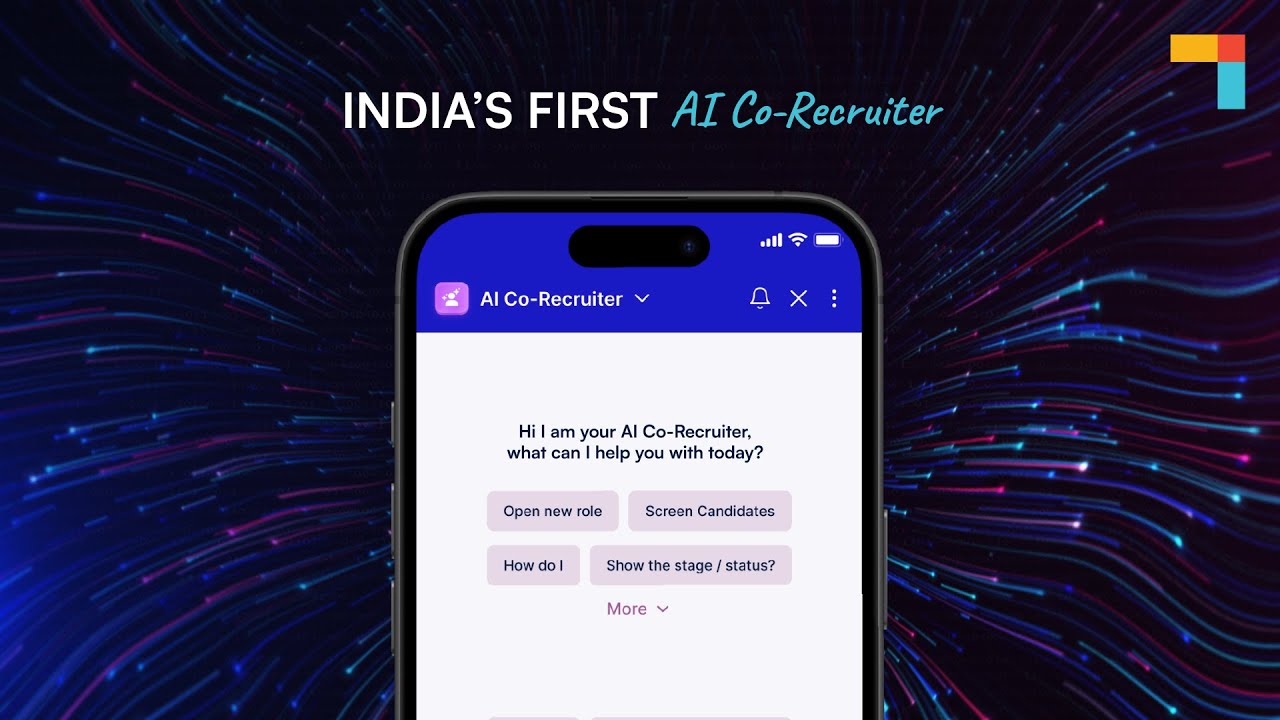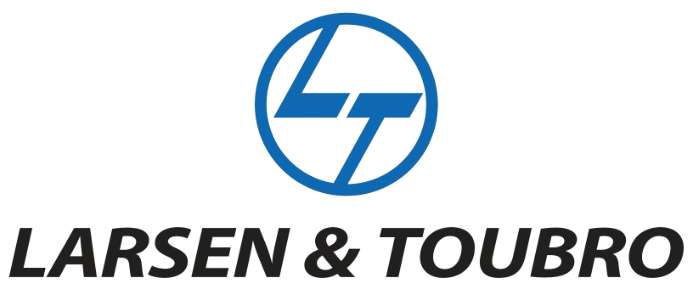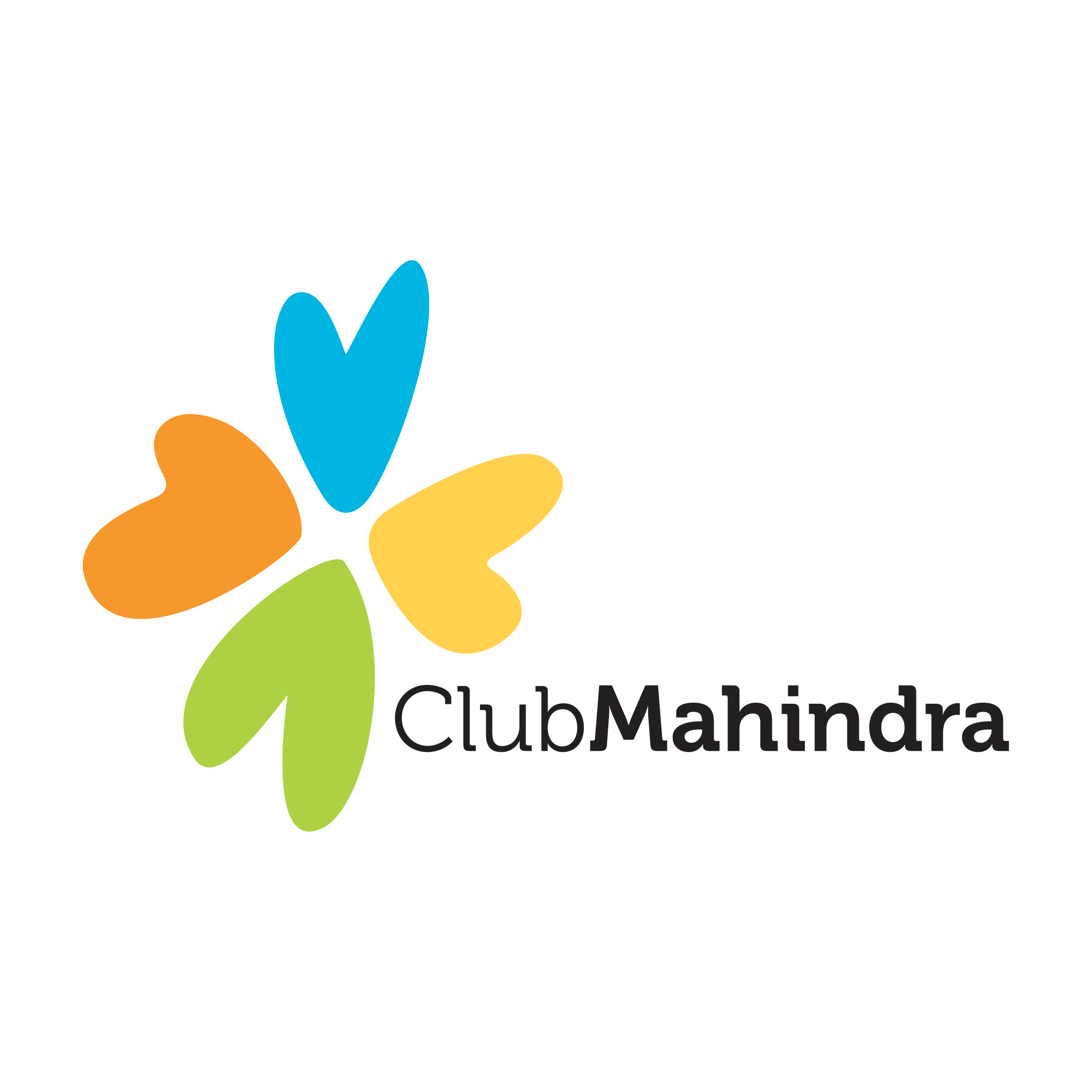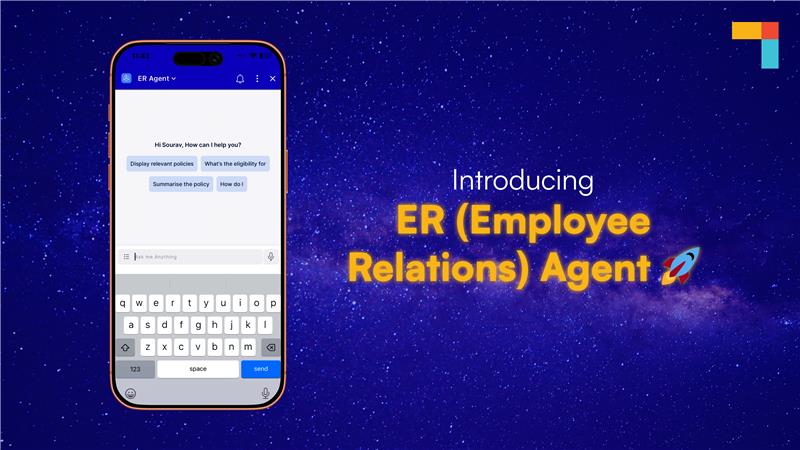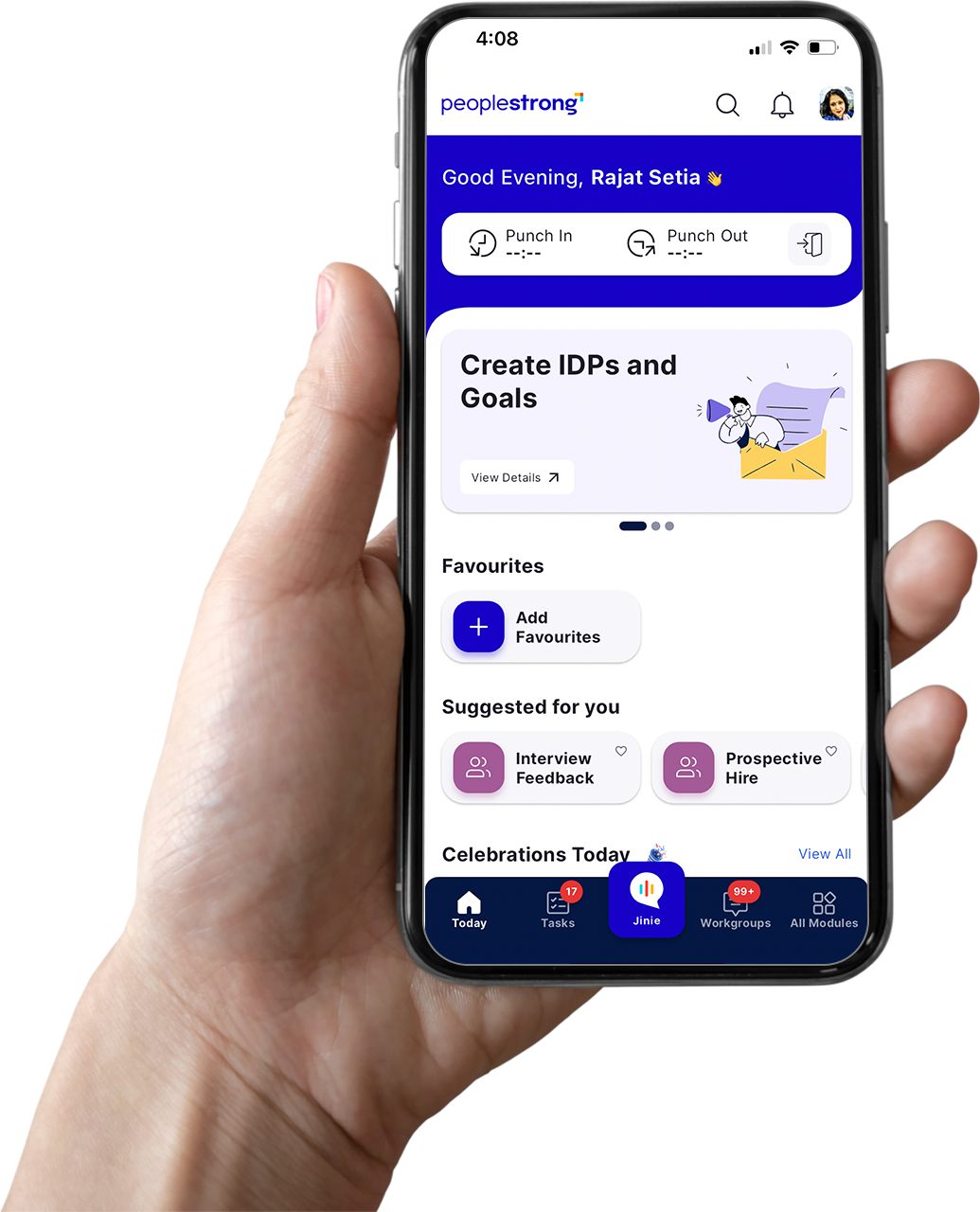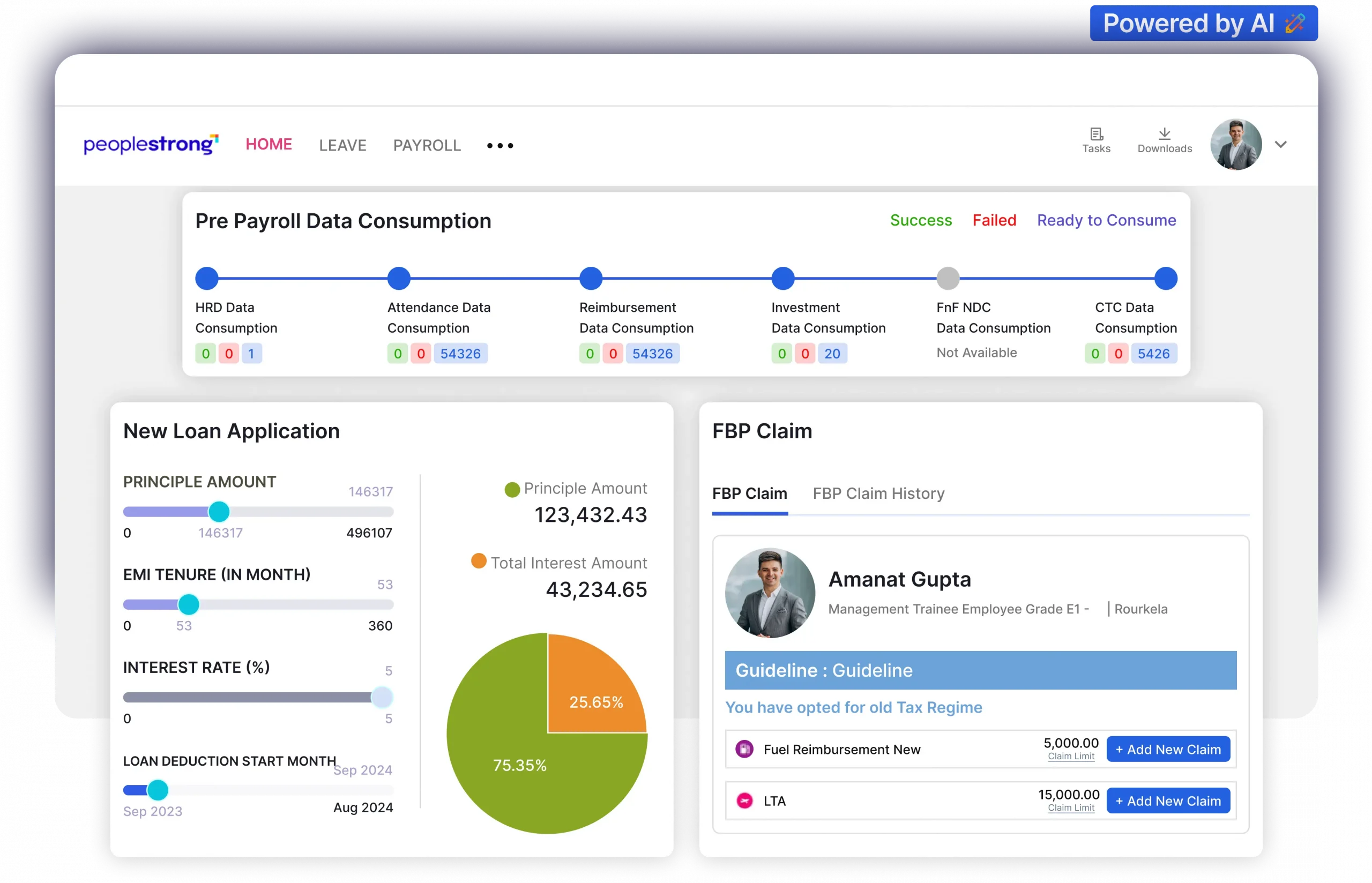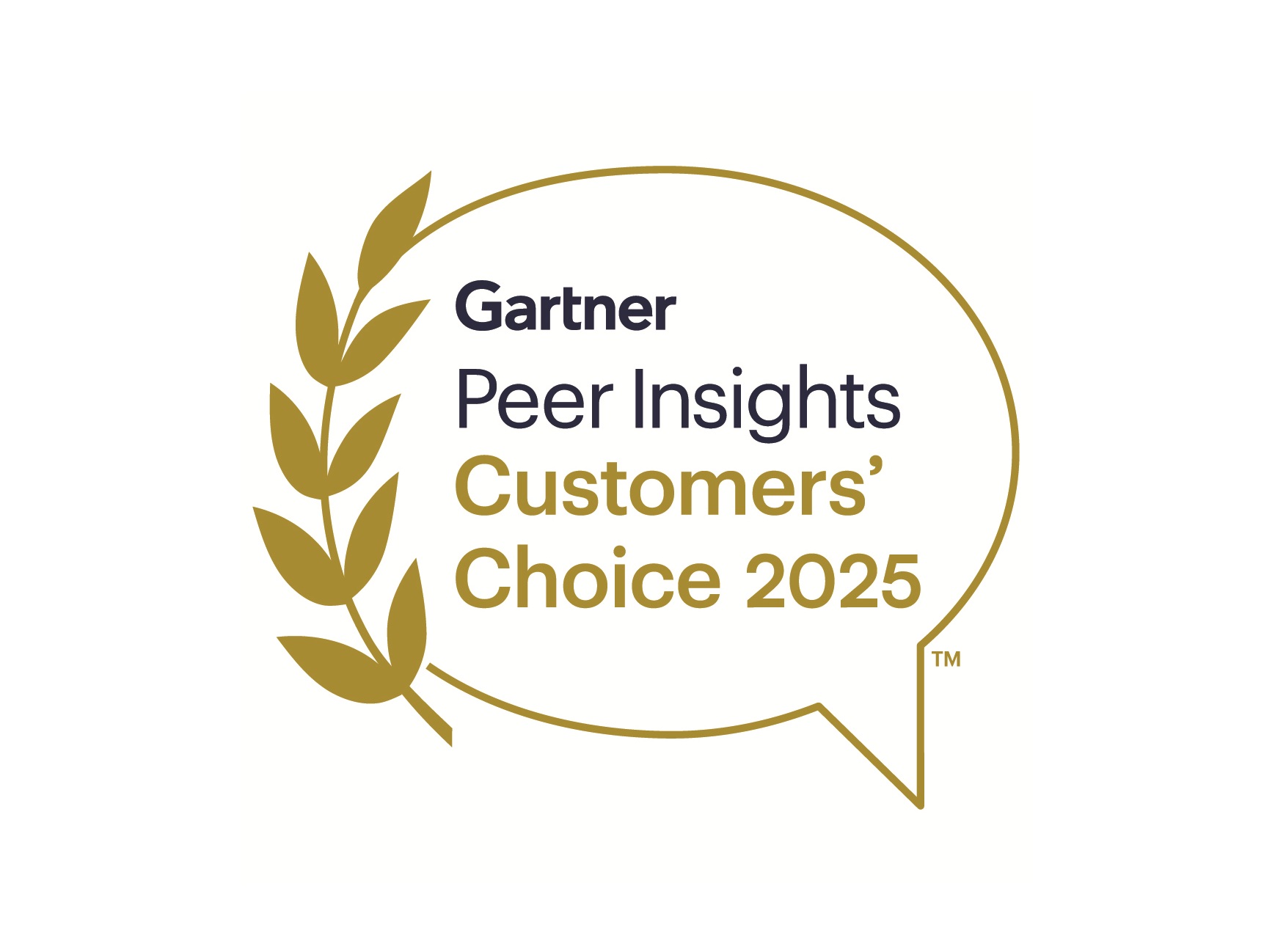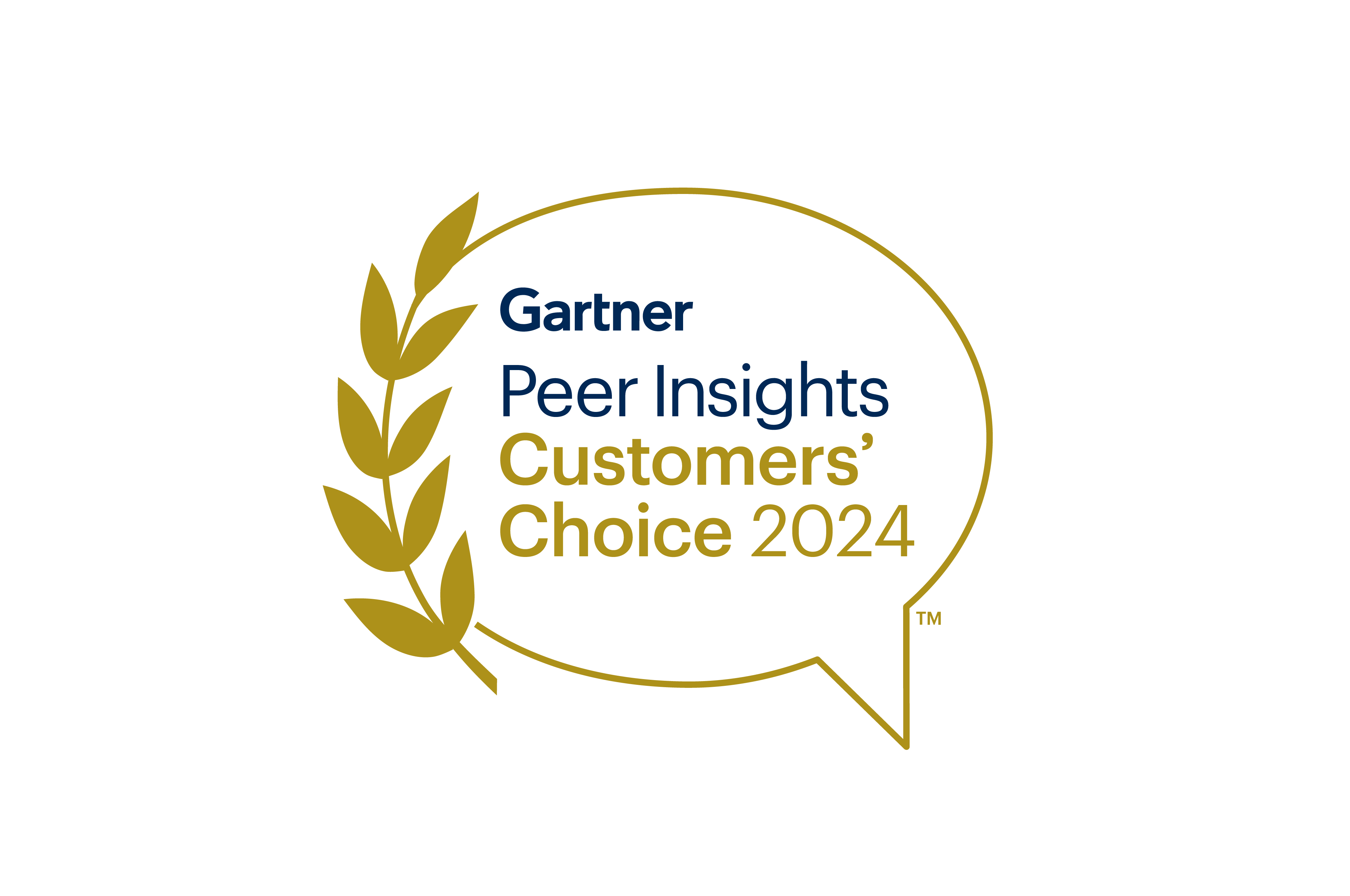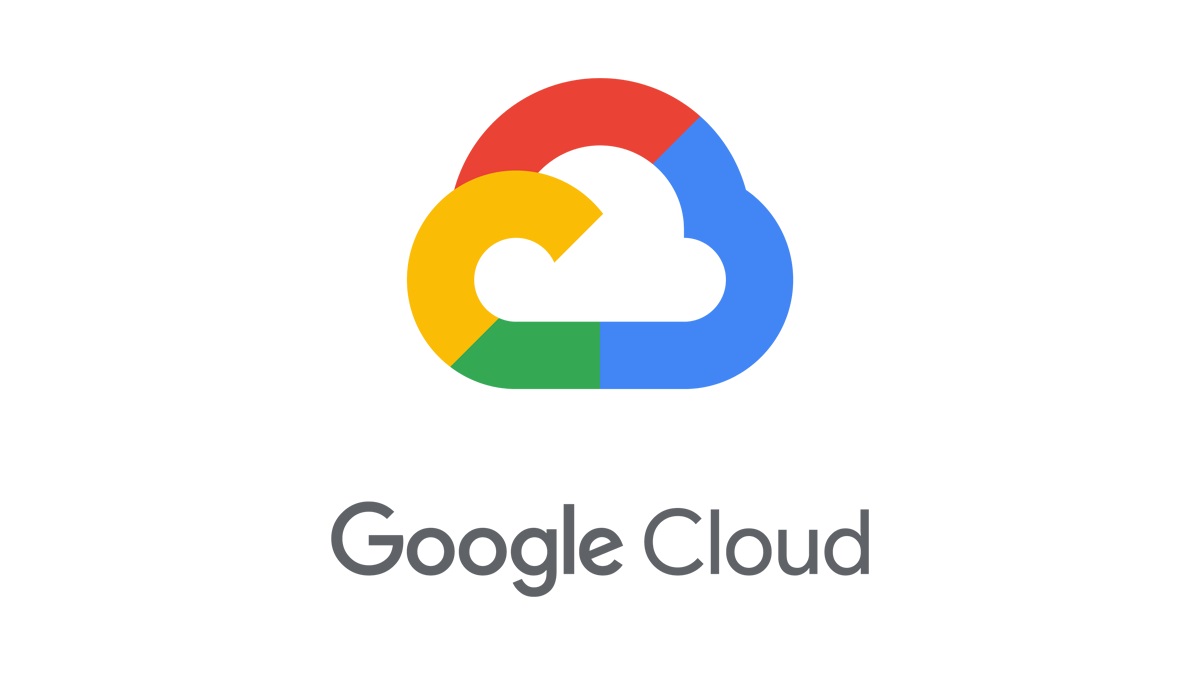In the next five years, 90% of HR leaders say they’ll be using AI to transform how they hire, train, and retain talent (Gartner, 2024). And they’re not just talking—they’re acting. According to Eightfold AI, 79% of HR professionals have already implemented or are actively exploring generative AI to automate tasks and enhance decision-making (Eightfold AI, 2023). From predictive hiring to personalized learning and real-time employee sentiment analysis, GenAI isn’t the future of HR—it’s already reshaping it. In this blog, we’ll explore the most impactful use cases of GenAI in HR—and what forward-thinking organizations must do to stay competitive.
What is Gen AI in the Context of HR?
At its core, Generative AI in HR is a system that processes language, the raw material of hiring, feedback, evaluation, and culture, and turns it into usable output quickly.
That means generating interview questions based on a role’s nuance, rewriting policies, or tailoring onboarding flows to specific personality profiles.
But here’s the shift: instead of relying on fixed workflows, genAI responds dynamically. It learns from context, adapts tone, and mirrors intent. It moves HR from being process-driven to language-driven, reducing friction between thought and execution.
Emerging Use Cases of Generative AI in HR that Most Teams Haven’t Explored Yet
| Use Case | What GenAI Does | Impact |
| Talent Acquisition | Predicts drop-offs, generates JDs, and preps interviewers | Faster hiring, fewer candidate losses, better interview alignment |
| Internal Mobility | Identifies stuck talent, suggests internal roles, and creates nudges | Reduces attrition, boosts internal movement |
| Learning & Development | Builds dynamic learning paths, recommends content, and aligns with performance | Personalized growth, improved skill development |
| Sentiment-Led Surveys | Analyzes tone, adapts survey flow, surfaces deeper insights | More honest feedback, early detection of disengagement |
| Exit Interviews | Extracts insights from structured and unstructured feedback | Improves retention strategies, flags cultural issues |
| AI-Crafted OKRs | Translates strategy into team-specific goals | Better alignment, faster goal setting |
| Workforce Planning | Simulates the attrition impact on projects and delivery | Proactive risk management, stronger resourcing |
| Analytics | Answers natural language queries and connects performance data | Instant insights, no analyst dependency |
| Stay Interviews | Runs automated, context-aware conversations with top talent | Prevents regrettable attrition |
| DEI in Job Descriptions | Flag bias, rewrites content to improve inclusivity | Wider candidate pool, improved diversity outcomes |
Most teams stop at AI-written job descriptions or chatbot scheduling. However, the real breakthroughs are happening behind the scenes, where generative AI rewires how HR analyzes intent, predicts behavior, and personalizes action at scale. Let’s find out:
1. Talent Acquisition: Predicting Drop-Offs Before They Happen
Most hiring tools make recruiters work harder. They give you dashboards, data, and dozens of tabs to manage—but not a lot of help. PeopleStrong’s recruitment software takes a different approach. It uses GenAI to take work off your plate, not add to it.
From matching the right CVs to the right JDs, to recommending interview questions and running first-round screening—PeopleStrong is built to make life easier for recruiters and hiring managers. No more writing interview scripts from scratch. No more chasing people for schedules. No more guesswork about who’s actually a good fit.
With PeopleStrong GenAI, you get:
- Smart JD-to-CV matching based on role, skills, and fit
- Skill-based candidate insights, not just keyword matches
- Recommended interview questions tailored to each job
- Automated screening interviews with AI-generated summaries
- Instant scheduling and follow-ups handled end-to-end
It’s not about more data. It’s about less effort, and better hiring.
2. Manage Internal Mobility
Attrition doesn’t start with a resignation letter; it starts the moment an employee feels stuck. GenAI can catch that moment. By tracking patterns in performance data, career history, interests, and team dynamics, GenAI suggests internal opportunities before employees start job-hunting.
What it can do:
- Flag employees showing signs of disengagement or underutilization
- Match them with relevant open roles or gigs across departments
- Auto-generate tailored nudges: “Based on your skills, this role could be a fit.”
- Suggest mentoring or skilling tracks to help them transition internally
3. GenAI in L&D

Most L&D programs have a one-size-fit-all approach with static courses. GenAI changes that by treating learning as a moving target, built around each employee’s current performance, team needs, and future potential. PeopleStrong’s AI recommends content and builds full training journeys that evolve with the learner.
What this unlocks:
- Individual Development Plans (IDPs) based on skills gaps, career paths, and performance reviews
- AI-curated learning modules matched to role expectations and project context
- Dynamic recommendations that shift based on completion rates, feedback, and business goals
Besides, it’s delivery-ready, meaning it works across devices (web + mobile), supports multiple formats (video, audio, assessments), and integrates with third-party content libraries and LMS platforms. This makes learning how it should be — frictionless, personalized, and linked directly to outcomes your business cares about.
4. Sentiment-Led Surveys

Traditional employee surveys capture what people say, not what they mean. GenAI changes that by layering sentiment intelligence over feedback data, picking up emotional signals and intent that standard scoring can’t detect.
Here’s how it works:
- Step 1: Dynamic Questioning: GenAI adapts the survey flow based on tone, language patterns, and previous responses — no two surveys are the same. This avoids generic templates and gets closer to what people care about.
- Step 2: Sentiment Parsing at Scale: It analyzes word choice, emotional cues, and writing style in free-text answers, detecting signs of disengagement, frustration, or confusion even if not stated directly.
- Step 3: Actionable Dashboards: GenAI clusters responses by sentiment themes (e.g., manager trust, role clarity, burnout signals), and maps trends by team, department, or location.
5. Conduct Exit Interviews
Exit interviews often get treated like a checkbox: structured questions, polite answers, minimal insight. But GenAI changes what you can extract from them. By running sentiment analysis across both structured forms and free-text responses (emails, chats, voice transcripts), it surfaces patterns that would otherwise be missed.
Instead of anecdotal feedback, you get signals across departments, managers, or policies, helping leaders trace recurring issues like burnout, toxic team culture, or misaligned growth paths. The AI also compares sentiment deltas between high performers and average attritors, giving sharper context to turnover data.
With GenAI these insights can feed directly into manager coaching plans, engagement initiatives, or policy tweaks, closing the loop before the next wave of exits begins.
6. AI-Crafted OKRs: From Strategy to Execution in Minutes

Setting OKRs is one thing. Translating them into focused, aligned action across teams? That’s where most organizations stall. GenAI steps in by turning vague strategic goals into precise, role-specific objectives, and it does it in minutes, not weeks.
Here’s how it plays out:
- Feed the AI your high-level business goals: revenue targets, product launches, and customer KPIs
- GenAI cascades those into measurable OKRs for every team, customized to their function, size, and maturity
- It tailors the tone and ambition of each key result depending on department context, with no one-size-fits-all templates
What you get isn’t just faster OKRs. You get sharper alignment without manual rewriting, endless workshops, or copy-paste chaos across teams.
7. Workforce Planning: Simulate Attrition Before It Derails Delivery
GenAI brings simulation capability into workforce planning, not just headcount dashboards. It models how potential attrition impacts live projects, critical timelines, or delivery SLAs.
Using historical data and org-level inputs, the system maps out skill dependencies, bench strength gaps, and delivery risk before the damage shows up on project status calls.
With GenAI HR teams can visualize what a team looks like after a 10% churn and whether they’ll still hit delivery dates. It can also highlight where internal mobility, gig staffing, or urgent hiring needs to be triggered.
This turns workforce planning from reactive resourcing into proactive risk management, with GenAI acting as the forecasting layer that builds for resilience, not just scale.
8. Jarvis-Like Insights

HR teams have no shortage of data. What they lack is time. Time to chase down the right metrics, clean the inputs, run the filters, and turn all of that into something people can use. GenAI fixes that bottleneck by making analytics conversational. You don’t build reports. You just ask the questions and get answers in plain language, instantly.
Here’s what that looks like:
- Ask: “Which teams have the highest attrition in the last 90 days?”
- Ask: “How does engagement compare between our remote and on-site employees?”
- Ask: “Which managers have the best internal mobility rates?”
GenAI connects the dots between performance trends, attrition signals, and engagement scores. This helps deliver clear, contextual takeaways anyone can understand and act on.
With PeopleStrong’s Jarvis-like engine powering this layer, your insights become real-time decisions. No dashboards to decode. No analysts on standby. Just clarity on tap.
9. Using Gen AI to Retain Top Talent
GenAI can automate stay interviews by running conversational bots that check in with high-potential employees before they consider leaving. These bots ask context-aware questions tailored to role, tenure, and past feedback, far more nuanced than generic surveys.
The AI picks up on sentiment, flags early signs of disengagement, and routes key signals to managers or HR partners in real-time. Unlike traditional interviews, these conversations happen regularly, at scale, and without the pressure of formal settings.
This helps surface what’s working, what’s not, and what might drive someone out, before they become a retention statistic.
10. DEI Analysis via Language Tone Detection in Job Descriptions
Job descriptions often unintentionally exclude qualified candidates through biased language or narrow tone. GenAI can scan and flag gender-coded phrases, overly aggressive tone, or jargon-heavy text that might discourage diverse applicants.
It rewrites content in real-time, balancing clarity with inclusivity, without compromising the essence of the role.
The tool evaluates sentence structure, implied messaging, and emotional tone. This ensures that your job posts reach a wider pool of candidates, encouraging more balanced hiring outcomes.
What HR Leaders Are Getting Wrong About GenAI
Despite the buzz, many HR leaders still misunderstand what generative AI does and what it doesn’t. The gap isn’t technical. It’s conceptual. Here’s what’s holding teams back:
Misconception 1: “GenAI is just a chatbot”
It’s not. The value of GenAI isn’t in answering one-off questions. It’s in reshaping how work gets done. Instead of static helpdesks, think automated onboarding workflows built from role, location, and department.
Or real-time policy updates written in plain language, ready to share. Even compliance checklists can now be generated instantly, tailored to jurisdiction or industry, without legal teams manually drafting versions for each region.
Misconception 2: “It replaces human”
It doesn’t. GenAI removes the repetition that keeps HR teams stuck in low-impact cycles. Writing 20 contract variations. Drafting offer letters. Answering the same onboarding queries. And what not? GenAI helps free up bandwidth, allowing people to focus on resolving real issues, rather than formatting PDFs.
Misconception 3: “We need a dedicated AI team to start”
No, you don’t. You don’t need a lab of data scientists. You need to rethink how your team works. The biggest gains come from embedding GenAI into tools your team already uses, such as HRIS systems, shared documents, and feedback forms.
Prompt libraries can live in Google Docs. Drafting flows can run inside your ticketing platform. Start small, but start close to where real work happens.
Getting Started Without Wasting Time
You don’t need a six-month roadmap to try GenAI. You need one hour, a few bad workflows, and a willingness to experiment in real work, not side projects. Here’s a quick guide to help you get started:
- Step 1: Shadow your own team: Watch how your HR ops team spends their time. Identify the top 3 repetitive, mind-numbing tasks; the ones that burn hours but don’t need judgment.
- Step 2: Pick one and test it: Use free tools like ChatGPT, Gemini, or Claude. No integrations, no vendor contracts. Just drop in the workflow and see what comes back.
- Step 3: Build a prompt library: Start collecting high-performing prompts by role and task: job offers, FAQs, policy drafts, L&D templates. Organize by use case, and refine as you go.
- Step 4: Run a “Prompt Jam.” Once a week, have team members share their best outputs from GenAI experiments. Quick demos, unexpected wins, or funny failures, all of it helps.
- Step 5: Treat GenAI like a trial hire: Review outputs like you would a new teammate: Is it accurate? Is it biased? Is it helping or slowing you down? Audit regularly and adjust.
Guardrails: Bias, Data Privacy, and Your Organization’s Reputation
GenAI can accelerate HR, but without basic boundaries, it can also backfire. Here’s what every HR leader needs to watch for:
- Bias isn’t always obvious: If your AI is trained on biased data (e.g., past hiring patterns), it can reinforce those blind spots, not remove them.
- Hallucinations can look polished: GenAI can generate confident, wrong answers that look legitimate. Always validate outputs before pushing them live.
- Sensitive data doesn’t belong in prompts: Feeding performance reviews, salaries, or personal identifiers into public models risks non-compliance. Keep private data private.
- Off-brand messaging spreads fast: One AI-generated email with the wrong tone can create a PR issue. Review anything external-facing with human oversight.
That’s why every HR team experimenting with GenAI should create a clear, lightweight usage policy. Not to restrict creativity, but to avoid the kind of mistakes that lead to retractions, apologies, or worse, broken trust with employees.
A good policy outlines where GenAI can be used, when human review is non-negotiable, what kinds of data stay off-limits, and who’s responsible for oversight.
PeopleStrong: How it Can Help with GenAI Adoption
Most HR teams want to use GenAI but get stuck at the starting line: unclear use cases, fragmented tools, and concerns over data security. PeopleStrong cuts through that noise. Instead of adding GenAI as an afterthought, it embeds it across its entire HRMS software from hiring to succession planning so HR teams can act faster without adding complexity.
Whether it’s drafting content, surfacing insights, or personalizing employee experience at scale, PeopleStrong’s GenAI engine is designed to fit real workflows, such as:
- Prepare Interview Panelists: Provide panelists with AI-generated, role-aligned interview questions tailored to each candidate’s profile, cutting prep time without sacrificing quality.
- Craft Human-Like Surveys: Deploy dynamic, sentiment-aware employee surveys that adjust tone and structure based on previous answers for deeper, more honest insights.
- Design Customized IDPs: Build personalized Individual Development Plans that align employee goals with role expectations, performance data, and future skill needs.
- Jarvis-Like Insights: Ask plain-language questions and get back real-time analytics from attrition risk to team-level performance trends without dashboards or manual report building.
- Mentor New Hires: Provide first-time employees with role-specific onboarding support and guidance from day one, without adding load on managers
- Meeting-Ready Reports: Generate clean, customized HR reports in seconds, ready for leadership reviews, without analyst involvement.
Turn HR Back Into a Strategic Engine
HR hasn’t lacked intent; it has been buried under administrative tasks, approvals, and copy-paste work. GenAI doesn’t make HR “more human.” It clears the noise so people can focus on the work that matters: decisions, culture, and growth.
This shift isn’t theoretical. The tools exist, the use cases are proven, and the blockers are mostly mental. You don’t need a transformation plan. You need one high-friction workflow to start with and the right system to support it.
Want to test real GenAI use cases for your organization?
Talk to us. We’ve already done the messy part. Now it’s about making it work for your team.
